Customer discovery questions all product teams need to ask
The best products are those that hit a very specific, very timely nerve for your customers. These customer discovery questions help you identify that nerve.

The best products are those that are shaped by both a technically skilled and creative product team and by the real-time needs of the market. No matter how incredibly innovative your product team is, that innovation can’t exist in a vacuum. You only start seeing real success when you align their expertise with what consumers are actually looking for.
Customer discovery is one of the best strategies that you can leverage here. It’s the process of understanding your potential and current customers' needs, behaviors, and pain points to inform your product development.
This helps you ground your ideation and fine-tuning processes to create products that meet real market needs.
But the questions matter. When you ask the right questions, you’re able to really hone in on what should be coming up on your product roadmap. Here are the right questions.
Understanding your ideal customers
There are a few questions you can ask your ideal customers, whether they already are a customer or you’re hoping to make them one. These questions should help you understand better how to craft your product, how to create new products, and how to position your product to connect with them best.
Demographics and background
Demographics are an important component in understanding who your ideal customers really are. When you have a solid grasp on the demographics, you can better segment the market, target those segments more effectively, and position your product strategically.
There are typical demographics like age, gender, income, education, and location, but there are also psychographics, which help you dig a little deeper into who they are, touching on topics like interests/hobbies, values, and lifestyles.
Some questions you can ask to gather this valuable background information are:
- Can you tell me a bit about your background and current occupation?
- What is your highest level of education?
- Can you walk me through a typical day in your life?
- What values are most important to you?
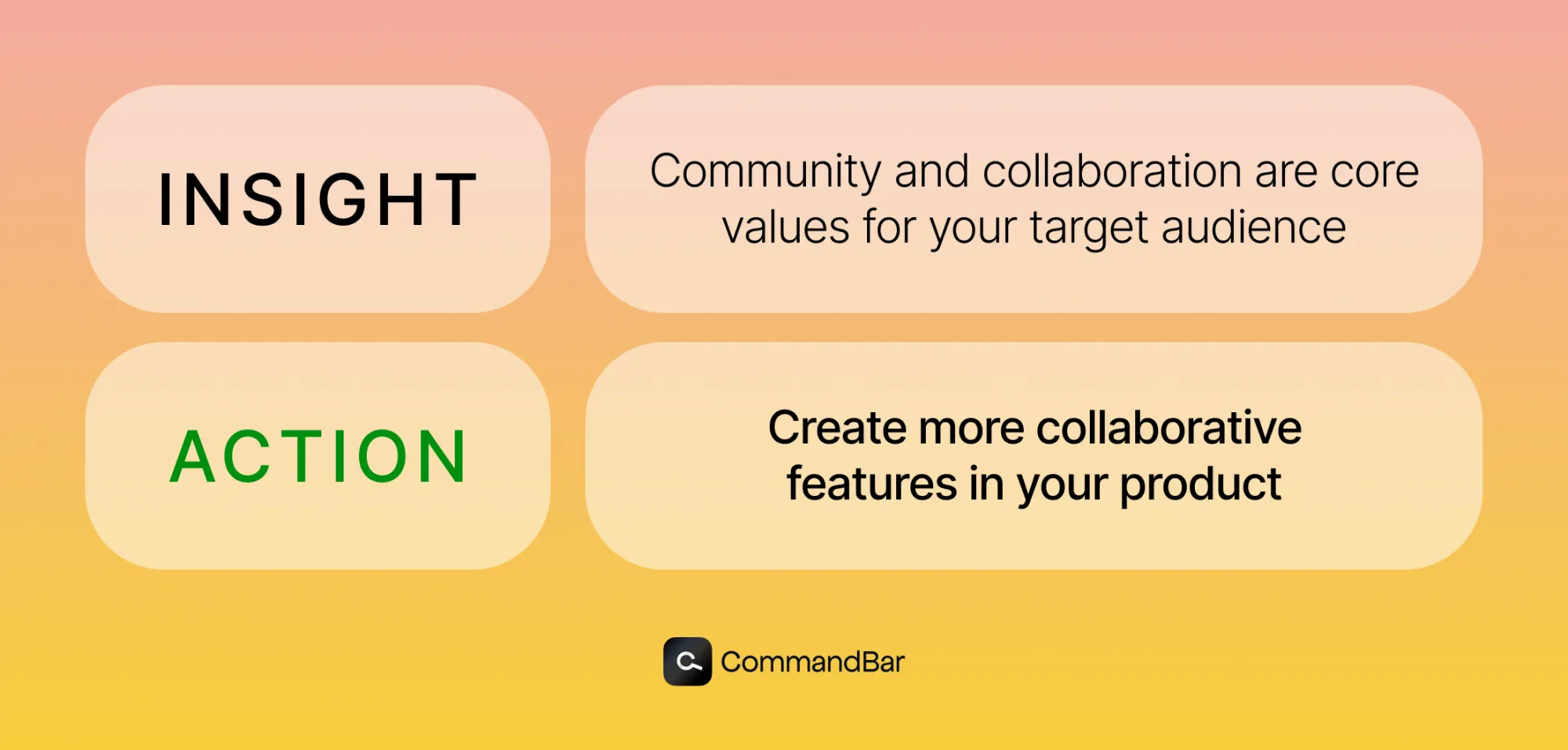
An example of how you may incorporate this information into product decisions is let’s say you find that in your most valuable audience segment, community and collaboration are very important shared values. You can use this information to add features like user forums, community-driven content, real-time collaboration tools, and team-oriented functionalities.
Goals and challenges
Almost every product is created to solve a problem. But sometimes, you may realize that it’s not fully solving the problem you set out to eliminate, or perhaps it’s actually better suited to solve a whole different problem you didn’t even think about before.
These customer discovery questions can help you get a better understanding of what these goals, pain points, and challenges are, so that you can best position your product as the way to get your customers where they need to be.
Some great questions to ask are:
- What is your biggest pain point regarding X? (X being the category your product is in)
- What is the pain point costing you? (In money, time, etc.)
- What goals are you hoping to achieve by using our product?
- How are you currently addressing these challenges?
- What are the biggest challenges you run into when trying to reach these goals?
- How much do these challenges impact your day-to-day life?
- What other solutions have you tried before using our product?
- Can you think of anyone else who would have these same problems (broadly, not an actual person)?
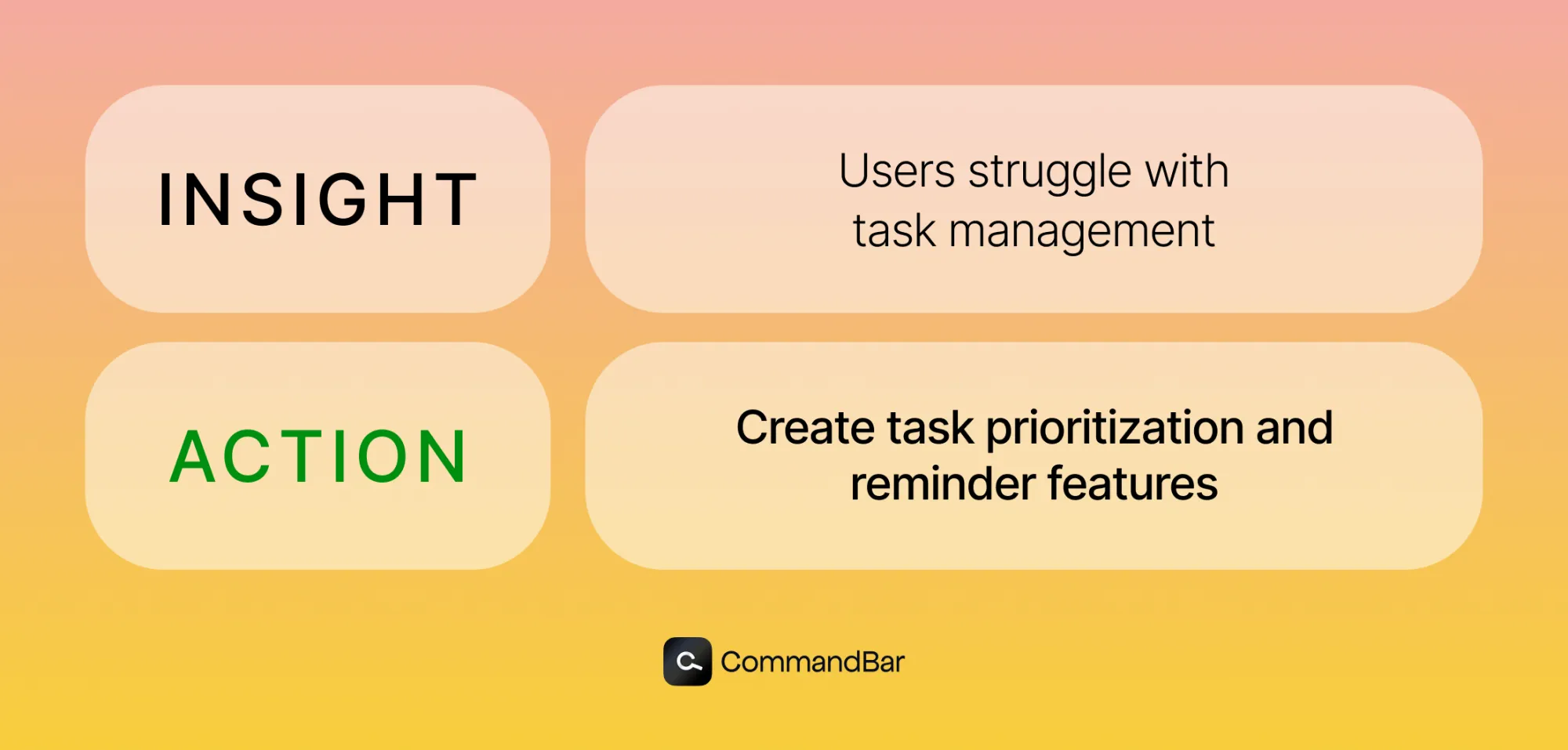
For example, let’s say the product team for a productivity tool discovered that users struggle with task management during their customer discovery process. They used this knowledge to prioritize features like task prioritization and reminders to deliver value that users are currently craving.
Exploring the customer journey
Throughout the customer journey, a customer’s opinion, perceptions, and goals can vary from one moment to the next. You can use customer discovery questions to discover the most salient topics on their mind in each of these moments to create products that are more enticing.
Awareness
In the awareness phase, your ability to grab your ideal customer’s attention is tested. You can ask questions to help you dissect how customers are first learning about products and the role of initial impressions in shaping their perceptions/actions going forward.
While we’re focusing on how product teams can use customer discovery questions here, this moment is also a great opportunity for those teams to collaborate with marketing and sales to craft messages around the product.
Some informative awareness questions to ask are:
- When searching for a new solution, where do you start?
- What sources do you rely on for information about new products?
- What prompted you to learn more about our product?
- Was there any specific detail you saw that made you think that our product could solve your problem?
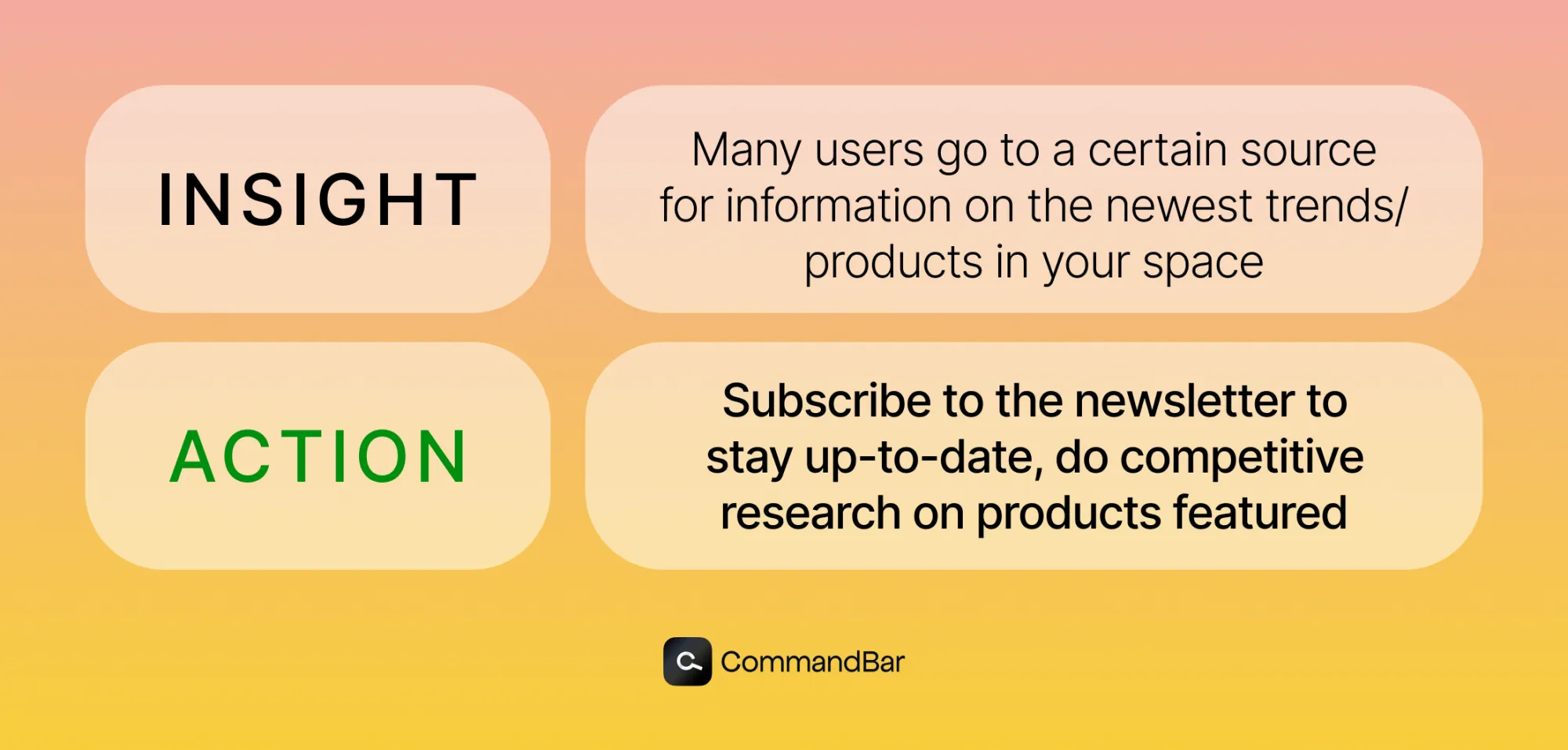
For an example of how this may look in practice, let’s zoom in on the question about the sources that they rely on for information. If many different people say that they use a certain source, perhaps it’s an email newsletter, to stay up-to-date on solutions, there are several ways you could leverage this information. You could subscribe to that newsletter to stay on top of trends, do competitive research on the products featured, or even have marketing pay for an ad placement.
Consideration
Once customers move from the awareness to consideration phase, their interest is piqued. This is when they start to be a little more analytical about how exactly your product can fill a specific need of theirs.
By asking some questions about their mindset during the consideration phase, you can learn about the factors that are influencing the early-mid stages of the decision-making process. This can help you optimize your product positioning and messaging, as well as the features of the product itself.
Questions that help you probe into the consideration phase are:
- What were the main factors you considered when evaluating our product?
- Did you compare our product to others, and if so, what were the deciding factors?
- Did you have any major concerns before deciding to use our product?
The value of these questions is clear. It helps you understand the ideas that are most top-of-mind in this critical phase.
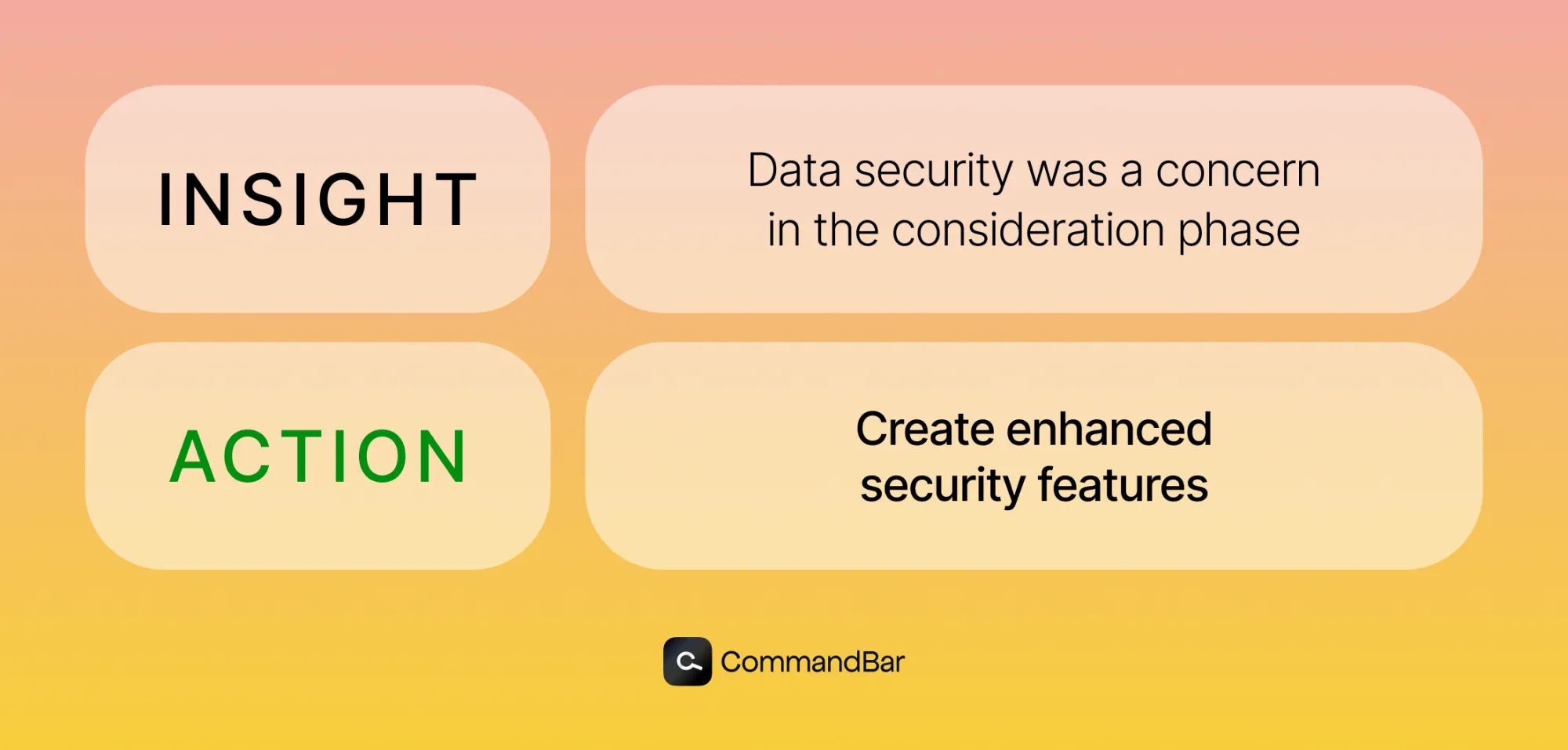
Let’s say that several users answered that they had some concerns about data security when deciding to use the product, whether they ultimately ended up signing up or not. This could lead the product team to focus on creating enhanced security features and communicating these changes to existing customers as well as in messaging to prospective customers.
Decision
By asking about logic and frame of mind during the decision stage, you can get to the root of what convinces customers to choose one product over another, or what motivates them to purchase anything at all.
Some questions that are important to include in your customer discovery questions are:
- What was the main deciding factor that made you choose our product? (If they became a client)
- What was the main deciding factor that made you not choose our product? (If they never converted)
- Which features or benefits were the most compelling?
- Were there any obstacles that almost stopped you from buying our product?
Product usage and experience
Of course, once a customer is actually active in your platform, you can dig much deeper into questions about your actual product. This is a great opportunity to learn about how the product lived up to the expectations that got a customer to pay in the first place.
Initial experience
First impressions are critical to long-term product adoption. No matter how incredible your product is, you are often at the mercy of what they experience in the very early days of use. In your customer discovery questions, you’ll want to probe into this topic and discover areas where first impressions either shined or fell short.
Onboarding is another highly important component of the initial experience. You want to be sure to include questions about how they perceived the onboarding experience.
Some questions to ask about the initial user experience are:
- What was your initial impression when you first used our product?
- How did you feel during your first interaction with our product?
- How would you rate how easy it was to get started with our product?
- Did you face any challenges during the onboarding process?
- How could we make the onboarding process better (better meaning easier, more informative, or more engaging)?
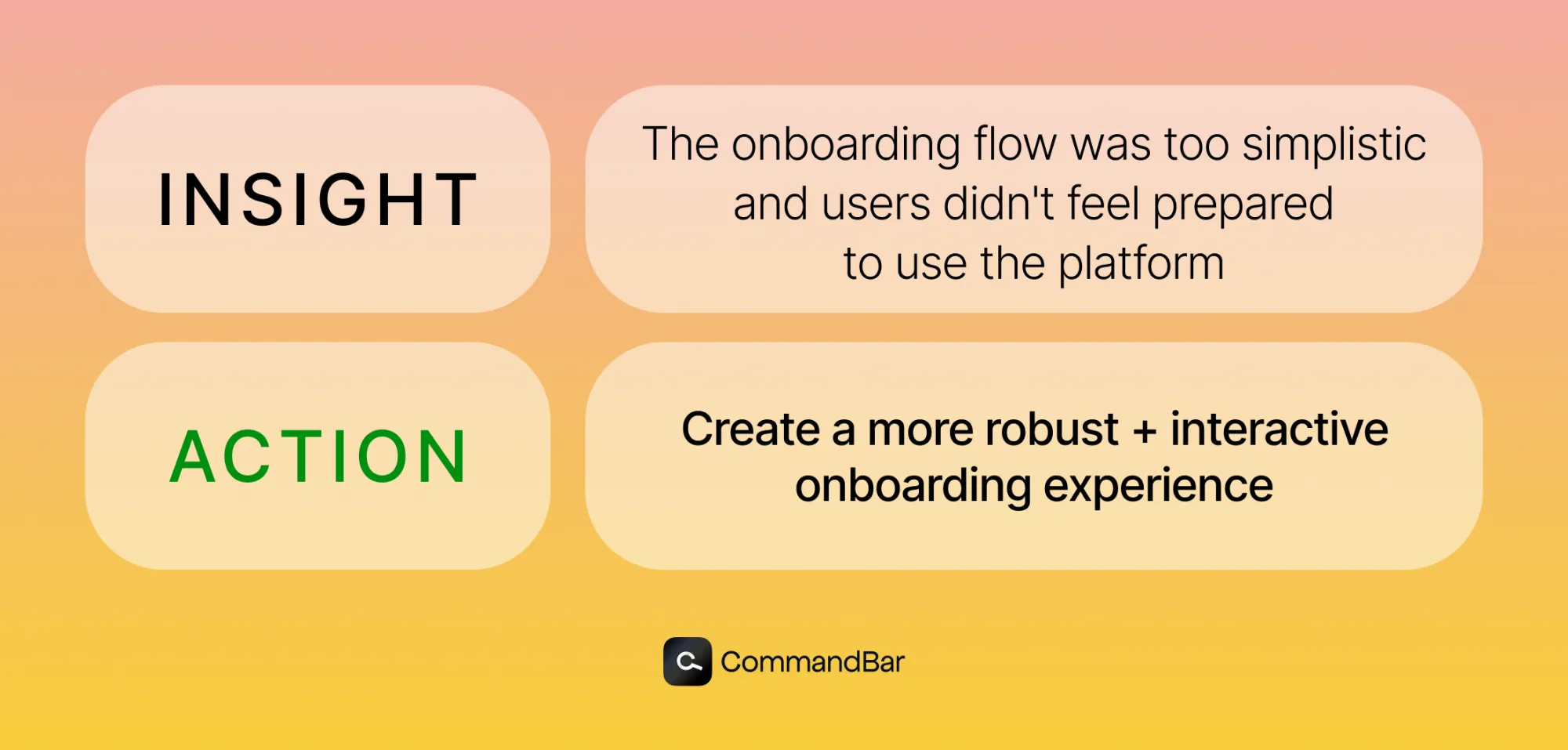
In asking several questions about your onboarding process, for example, you may find that the onboarding flow was too simplistic. Even if it had a high completion rate, it left users feeling like they didn’t have all the tools they needed to confidently navigate the platform. This could sabotage adoption in the long term, so the product team could get to work on building out a more robust and interactive onboarding experience.
Ongoing use
The final piece you’ll want to make sure you touch on in your customer discovery questions is your customers’ ongoing use of and engagement with your product. By understanding how your customers use your product over time, you can get to the heart of how much value they’re actually realizing from your product. You can also discover where the experience may be lacking, or even where you’re over-delivering on areas that don’t matter.
You can pull a lot of this engagement information from existing data, like Google Analytics, insight from your user assistance platform, customer service stats, etc, so avoid asking any of these numbers-based questions (i.e. how often do you use the platform) that you can easily grab. Instead, use these questions to probe deeper into the information that those dashboards can’t tell you.
A handful of questions to uncover usage patterns and feature preferences are:
- Are there any features you find unnecessary?
- What’s your favorite part of the platform?
- What features do you wish our product had?
- If you could change one thing about our product, what would that be?
- Let’s say our closest competitor launched a new feature that got you to switch from using our product to using theirs. What would that feature be?
Using this information, you can prioritize the next feature that you should start developing, or you could stop investing in improving a product that few people currently use or want to use.
The best customer data is collected continuously
Diving into this customer discovery process through large-scale surveys, calls, or focus groups is invaluable in collecting large amounts of data all at once. But you can’t rely on simply doing this once a year or even once a quarter if you hope to stay in front of the conversation.
Make this data collection a part of your everyday process. Whether it’s adding in a contextual survey that pops up every once in a while to probe into the experience a user just had, or analyzing the chat that a user had with your conversational AI tool, you should constantly be putting a magnifying glass to all of this data to continuously back you up in your goal of delivering the most relevant, most helpful, most compelling product that you can for your target audience.
